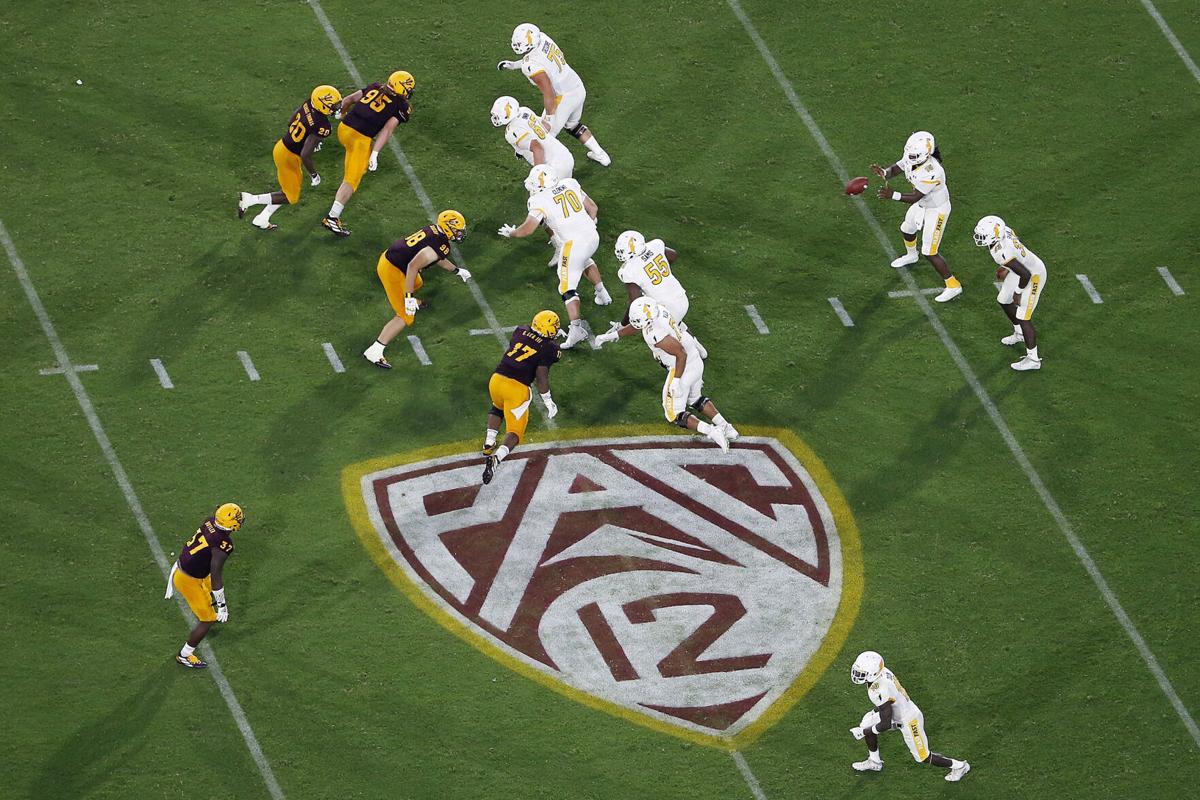The release of federal tax filings by four major conferences late last week added clarity to one aspect of the Pac-12’s near-term fate. It appears the poor are getting poorer relative to the competition.
We knew the Pac-12 presidents’ decision to play a short football season in 2020 would reduce the cash spun off to the campuses in the 2021 fiscal year. And, in fact, the Pac-12 reported distributions that dropped 41% year-over-year, from an average of $33.6 million per school prior to the pandemic to an average of $19.8 million in the year impacted by COVID.
But because the Pac-12 has a smaller revenue base than two peers (Big Ten and SEC) and played fewer football games than the two leagues with comparable revenue streams (ACC and Big 12), it fell momentously short of matching the campus distributions anywhere in the Power Five.
The tally for FY21:
SEC: $54.6 million per school
Big Ten: $46.1 million per school
ACC: $36.6 million per school
Big 12: $35.6 million per school
Pac-12: $19.8 million per school
(Figures for all leagues except the Pac-12 were published last week by USA Today. When a range of payouts within a specific conference was published, we have averaged them for clarity.)
The Pac-12 expects normalcy to return in the current fiscal year and will report its FY22 financials next spring.
“We are encouraged by the substantial return to pre-pandemic levels of revenue and distributions that our 2021-22 financial results will show,” commissioner George Kliavkoff said Friday as the Pac-12 released its tax filings.
But a 41% year-over-year drop can linger beyond the impacted fiscal year, particularly when it stands in such stark contrast to cash flows across the Power Five landscape.
And a second development, revealed in the ACC’s financials, highlighted the Pac-12’s ever-increasing revenue challenge.
Conferences manage their distributions differently, making apples-to-apples comparisons a tad fraught. But just two years ago, the Pac-12 was sending $2 million to $3 million more to its schools (on average) than the ACC.
The expanding carriage of the ACC Network, which is owned by ESPN, changed that dynamic.
With distribution climbing to 80% for the entirety of the 2020-21 sports calendar, according to USA Today, the ACC would have passed the Pac-12 in revenue distributions even if the Pac-12 had played a normal football season in the fall of 2020.
In other words, the Pac-12 is now in last place among the Power Five in annual media rights payouts — and likely to remain in fifth place until its new contract cycle begins with the 2024 football season. (Kliavkoff is expected to begin formal negotiations with media partners later this year.)
The Hotline has the back-of-the-envelope math to support our conclusion.
Notes on the following projections:
Because campus distributions include two components that are impossible to predict (College Football Playoff appearances and NCAA Tournament bids/wins), we assumed those revenue streams were fixed and focused on the income from Tier 1 media deals and conference networks.
For conferences that report a range of payouts, like the ACC, we averaged the highest and lowest.
A year-over-year escalator of 4% was used.
Figures are Hotline estimates unless otherwise noted.
2021 fiscal year
SEC: $54.6 million per school (official)
Big Ten: $46.1 million per school (official)
ACC: $36.6 million per school (official)
Big 12: $35.6 million per school (official)
Pac-12: $19.8 million per school (official)
2022 fiscal year
Big Ten: $58.7 million
SEC: $58.7 million
Big 12: $40.8 million
ACC: $38.1 million
Pac-12: $36.3 million
Note: Figures based off pre-pandemic distributions and adjusted for changes disclosed by the leagues.
2023 fiscal year
Big Ten: $61.1 million
SEC: $61 million
Big 12: $42.4 million
ACC: $42.1 million
Pac-12: $37.8 million
Note: The ACC Network is expected to have full distribution for the entirety of FY23. We have assigned a $4 million bump to each school’s distribution based, in large part, on added Comcast subscribers within the footprint. Generally speaking, each in-market cable home is worth about $1 per month to a conference network; Xfinity has a massive presence in Pennsylvania, Georgia and Florida.
2024 fiscal year
Big Ten: $86.9 million
SEC: $63.4 million
Big 12: $44.1 million
ACC: $43.8 million
Pac-12: $39.3 million
Note: The Big Ten’s current media rights deal expires at the end of FY23, so the 2023 football season will be the first under a new agreement. To account for what should be a whopping increase, we first assigned 70% of the annual conference distribution to direct media rights; the remaining 30% includes the fixed payments (for our purposes) from the CFP and March Madness. We then increased the direct media rights valuation by 60% to account for new contracts. That figure split the difference between the increase in NFL media rights from its new agreements (80%) and the increase in MLB rights from its new deals (40%).
FY21-24 total payouts per school
Big Ten: $252.8 million
SEC: $237.7 million
Big 12: $162.9 million
ACC: $160.6 million
Pac-12: $133.2 million
Which leads us to …
Pac-12 four-year revenue deficit relative to:
Big Ten: $119.6 million per school
SEC: $104.5 million per school
Big 12: $29.7 million per school
ACC: $27.4 million per school
From a comparative cash flow standpoint, it could be a long four years on the West Coast.





